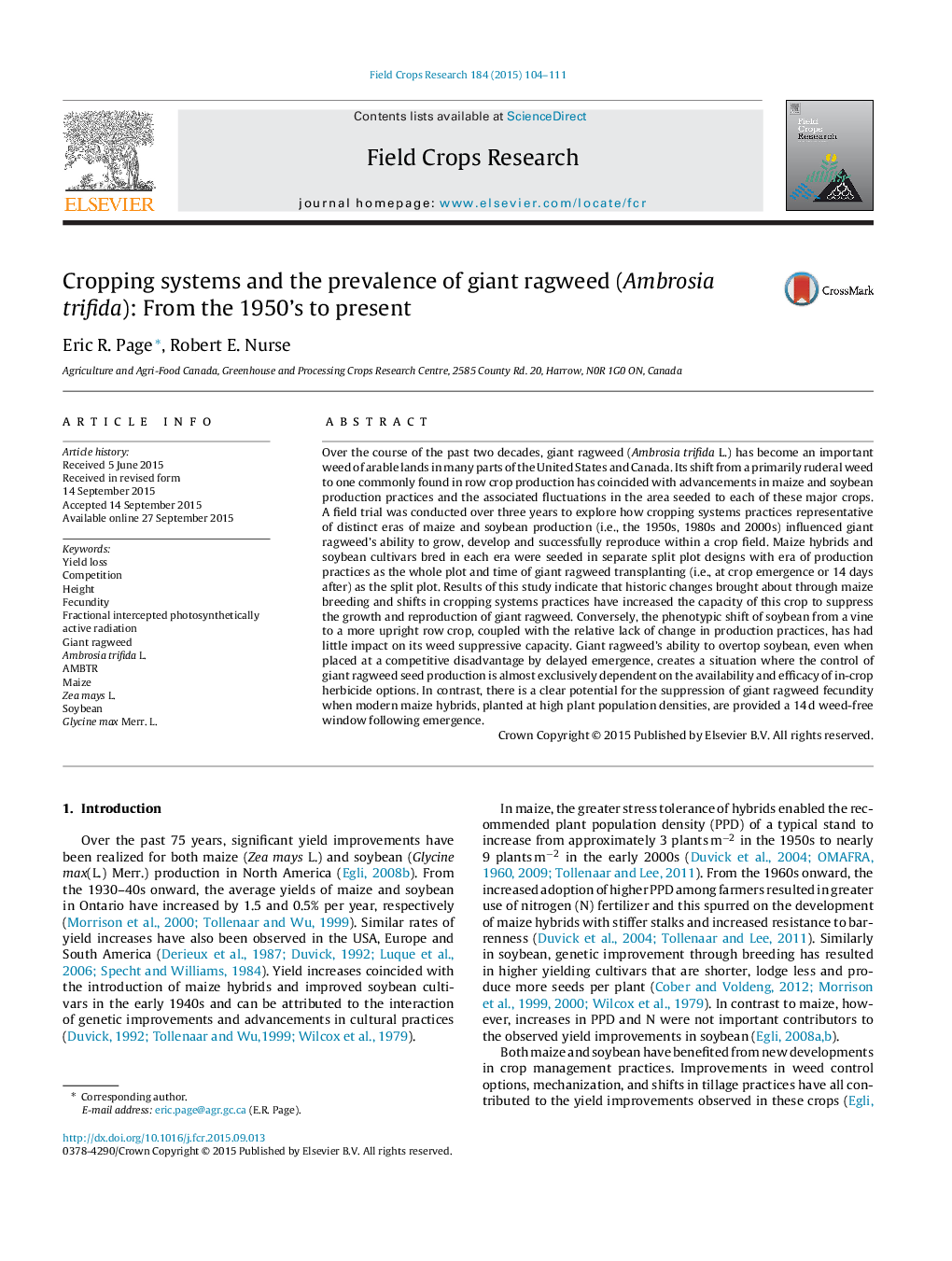| کد مقاله | کد نشریه | سال انتشار | مقاله انگلیسی | نسخه تمام متن |
|---|---|---|---|---|
| 6374644 | 1624679 | 2015 | 8 صفحه PDF | دانلود رایگان |
عنوان انگلیسی مقاله ISI
Cropping systems and the prevalence of giant ragweed (Ambrosia trifida): From the 1950's to present
دانلود مقاله + سفارش ترجمه
دانلود مقاله ISI انگلیسی
رایگان برای ایرانیان
کلمات کلیدی
موضوعات مرتبط
علوم زیستی و بیوفناوری
علوم کشاورزی و بیولوژیک
علوم زراعت و اصلاح نباتات
پیش نمایش صفحه اول مقاله

چکیده انگلیسی
Over the course of the past two decades, giant ragweed (Ambrosia trifida L.) has become an important weed of arable lands in many parts of the United States and Canada. Its shift from a primarily ruderal weed to one commonly found in row crop production has coincided with advancements in maize and soybean production practices and the associated fluctuations in the area seeded to each of these major crops. A field trial was conducted over three years to explore how cropping systems practices representative of distinct eras of maize and soybean production (i.e., the 1950s, 1980s and 2000s) influenced giant ragweed's ability to grow, develop and successfully reproduce within a crop field. Maize hybrids and soybean cultivars bred in each era were seeded in separate split plot designs with era of production practices as the whole plot and time of giant ragweed transplanting (i.e., at crop emergence or 14 days after) as the split plot. Results of this study indicate that historic changes brought about through maize breeding and shifts in cropping systems practices have increased the capacity of this crop to suppress the growth and reproduction of giant ragweed. Conversely, the phenotypic shift of soybean from a vine to a more upright row crop, coupled with the relative lack of change in production practices, has had little impact on its weed suppressive capacity. Giant ragweed's ability to overtop soybean, even when placed at a competitive disadvantage by delayed emergence, creates a situation where the control of giant ragweed seed production is almost exclusively dependent on the availability and efficacy of in-crop herbicide options. In contrast, there is a clear potential for the suppression of giant ragweed fecundity when modern maize hybrids, planted at high plant population densities, are provided a 14Â d weed-free window following emergence.
ناشر
Database: Elsevier - ScienceDirect (ساینس دایرکت)
Journal: Field Crops Research - Volume 184, December 2015, Pages 104-111
Journal: Field Crops Research - Volume 184, December 2015, Pages 104-111
نویسندگان
Eric R. Page, Robert E. Nurse,